In recent years, Europe has witnessed a remarkable surge in the adoption of solar panels, marking a pivotal shift towards renewable energy. Data from the Microgeneration Certification Scheme (MCS), a body that certifies low-carbon renewable technologies and contractors, underscores this trend. In 2022, the EU saw the addition of 41.4 GW of solar power capacity, and it is anticipated to more than double its overall solar market within the next four years.
This burgeoning interest in solar technology can be attributed to a confluence of factors, but paramount among them is the substantial decrease in the cost of solar electric panels. Over the last decade, the price of PV panels has plummeted by approximately 70%, rendering solar energy an increasingly viable and attractive option for both homeowners and commercial establishments. This cost reduction has demystified the initial perception of solar installations as a reserve for the affluent or hardcore environmentalists, now making it an accessible choice for the average homeowner.
Furthermore, government interventions have significantly contributed to the flourishing solar market in Europe. A notable initiative was the introduction of the Feed-in Tariff (FiT) in 2010, which provided a guaranteed price per kilowatt-hour (kWh) for electricity generated from renewable sources like solar panels. Although the FiT program has since been supplanted by the Smart Export Guarantee (SEG), which is considered to be less generous, the impact of FiT was substantial. It essentially laid the groundwork for the solar revolution in Europe by enhancing the economic allure of investing in solar technology.
The ripple effects of these developments have been nothing short of transformative. Homeowners are not only becoming increasingly eco-conscious but are also keen on harnessing solar energy as a means to mitigate their electricity costs. In a broader sense, this solar adoption spree is propelling Europe closer to its ambitious carbon neutrality goals.
As the wave of solar installations continues to sweep across Europe, many homeowners find themselves at a crossroads, contemplating the idea of transitioning to solar energy. For those considering this green leap, a myriad of solar PV panel options awaits. However, making an informed decision necessitates a thorough examination of the various solar PV panels available in the market. From examining the efficiency, cost, to the warranty and the reputation of the manufacturer, every facet warrants meticulous consideration to ensure a worthwhile investment in the solar frontier
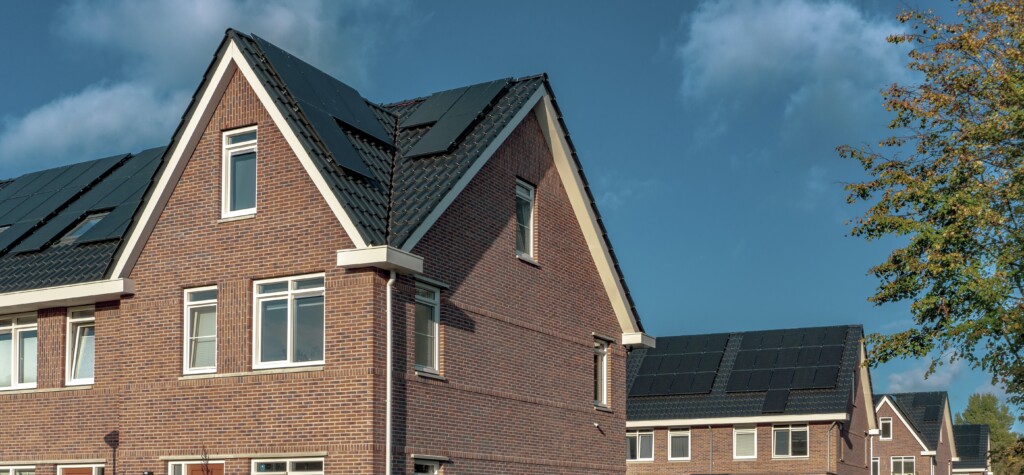
When on the lookout for a suitable solar installation company for your new domestic solar setup, it’s vital to weigh in several key factors to ensure a fruitful investment. Here’s a breakdown of the crucial considerations:
Taking a diligent approach in assessing the above factors will steer you towards making an informed decision while selecting a solar installation company for your domestic needs.
Are you looking for the best solar panels in Europe for 2023? Here’s a look at our top picks to help you make an informed decision.

Imaged against a clean white backdrop, the SunPower Maxeon 6 AC solar panel stands out, not just visually, but also in terms of its performance metrics. Offering a staggering 40-year product warranty, SunPower evidently stands behind the longevity and reliability of the Maxeon 6 AC.
| Efficiency | Power (W) | Product warranty | Performance warranty | Heat resistance | Weight (kg) | Eco-friendly Aspect |
|---|---|---|---|---|---|---|
| 22.8% | 440 | 40 years | 92% after 25 years | -0.29% per °C | 21.8 | Panels are recycled |
The hallmark of the SunPower Maxeon 6 AC is its impeccable performance across the board. It boasts an efficiency rate of 22.8%, making it one of the more efficient panels in the market, tying at fourth place for the best efficiency rate. Moreover, the 40-year product warranty is a show of confidence from SunPower, ensuring that even at the end of this period, the panel will still operate at 88.25% of its original efficiency.
Beyond efficiency and warranty, the Maxeon 6 AC also shines in terms of its peak power output and admirable heat resistance. Even after its extensive lifespan, the eco-consciousness of SunPower comes to light – they will take back and recycle the panels. While it may not lead the pack in every category, the Maxeon 6 AC undeniably presents a balanced blend of attributes, making it a superior choice for those seeking a reliable, long-term solar solution.
Pros and Cons of SunPower Maxeon 6 AC
| Pros | Cons |
|---|---|
| Impressive efficiency rate | None observed |
| Unmatched product warranty | |
| Solid performance warranty |
In summary, the SunPower Maxeon 6 AC is a sterling choice for anyone looking to invest in a solar panel that delivers on all fronts, with no discernible downsides.
Posed against a stark white background, the AIKO N-Type ABC White Hole Series solar panel not only stands out visually but also leads the efficiency charts.
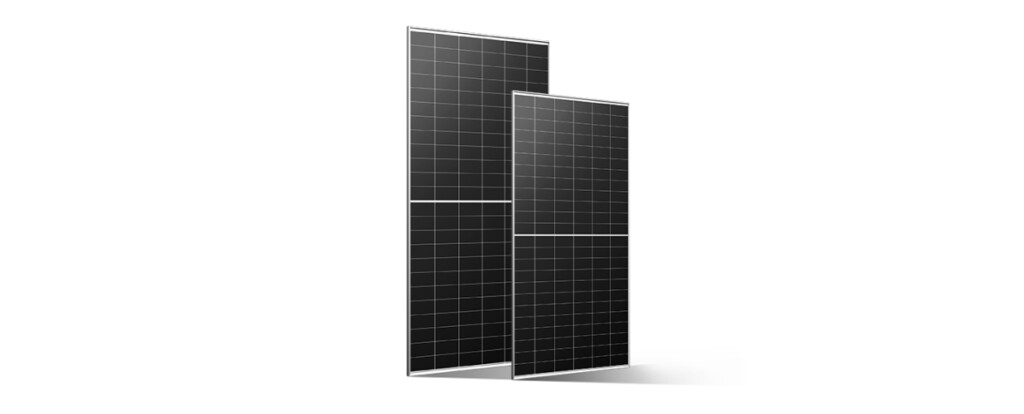
| Efficiency | Power (W) | Product warranty | Performance warranty | Heat resistance | Weight (kg) | Eco-friendly Aspect |
|---|---|---|---|---|---|---|
| 24% | 620 | 15 years | 88.85% after 30 years | -0.29% per °C | 28.2 | Promoting carbon neutrality with Burgenland Energie |
Not long ago, a 20% efficiency was considered a benchmark of high performance among domestic solar panels. However, the bar has been raised, with the best panels now surpassing this figure substantially. Out of 48 panels analyzed, an overwhelming 44 boasted an efficiency of 20% or more, with 18 of them exhibiting an efficiency rate of 22% or higher, effortlessly surpassing the industry average which lingers around 20%.
Standing a class apart is AIKO’s 72-cell N-Type ABC White Hole Series, with its monumental 24% efficiency, setting a new high standard in the realm of domestic solar panels. This impressive efficiency metric ensures optimal harnessing of solar energy throughout the varying seasons.
Pros and Cons of AIKO N-Type ABC White Hole Series (72 Cells)
| Pros | Cons |
|---|---|
| Market-leading efficiency | On the heavier side |
| Exceptional performance warranty | Larger dimensions might pose installation challenges |
| High peak power output, among the best in the market | Product warranty duration could be better |
In a nutshell, the AIKO N-Type ABC White Hole Series (72 Cells) is a standout choice for those prioritizing efficiency above all, although its size and product warranty period are areas where there’s room for improvement.
In the dynamic realm of solar energy, there’s a relentless quest for higher efficiency and greater power output. Among the stellar contenders that have emerged, Seraphim’s enigmatically named SRP-670-BMC-BG solar panel has positioned itself as a significant powerhouse, propelling the standard of peak power output to a lofty new height.

| Efficiency | Power (W) | Product warranty | Performance warranty | Heat resistance | Weight (kg) | Eco-friendly credentials |
|---|---|---|---|---|---|---|
| 21.57% | 670 | 15 years | 84.95% after 30 years | -0.34% per °C | 38.5 | In UN Global Compact & goal to reach “zero carbon” |
The Seraphim SRP-670-BMC-BG is not just a solar panel; it’s a testament to what the confluence of innovative engineering and a vision for sustainable energy can achieve. Its peak power output of 670 watts is an astounding 91% higher than the typical 350 W panels that dominate the market. Through extensive analysis, it was noted that the peak power of this Seraphim marvel is at least 100 watts above the majority of the contenders.
Measuring 3.1 square meters and weighing 38.5 kg, this panel holds the title for being one of the largest and heaviest options available for domestic properties. It might require a spacious rooftop, but the rewards in peak power output are unparalleled.
Pros and Cons of Seraphim SRP-670-BMC-BG
| Pros | Cons |
|---|---|
| Remarkable peak power output | The 15-year product warranty could be longer |
| High efficiency rating places it among the top-tier solar panels | Its substantial size and weight may pose installation challenges |
| Admirable eco-friendly credentials with alignment to global sustainability goals | Performance warranty could be improved |
The Seraphim SRP-670-BMC-BG solar panel transcends the conventional boundaries of power production, setting a bold benchmark for those seeking to significantly ramp up their energy output. However, its formidable size and modest warranties necessitate a thorough consideration of the logistical and long-term aspects before making an investment.
In the vast world of solar panels, the Project Solar Evolution Titan 445 shines bright with an assurance that is meant to last a lifetime. This stellar panel not only reflects an advanced leap in solar technology but also carries the torch of trust with an industry-leading lifetime product warranty.
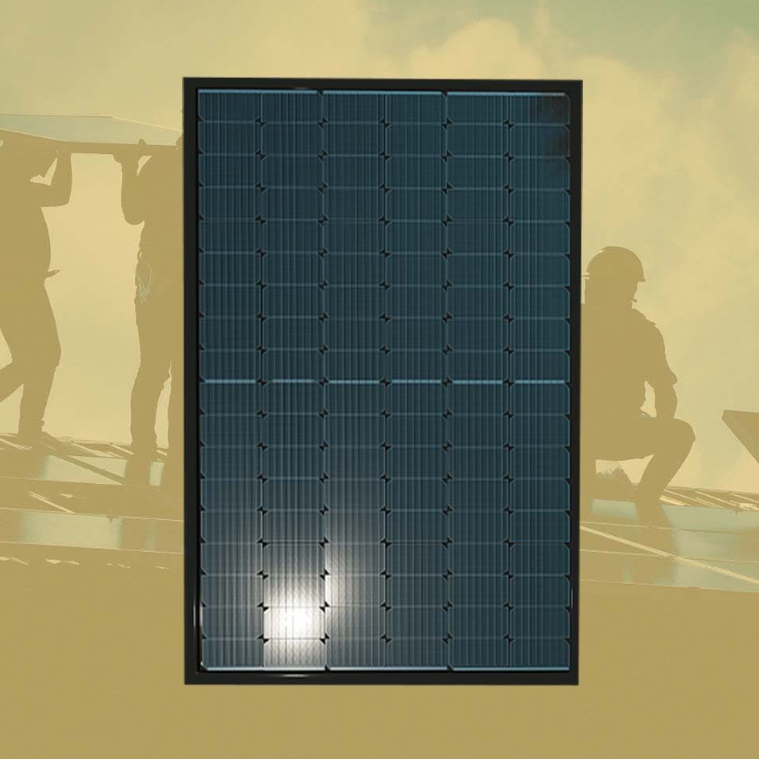
| Efficiency | Power (W) | Product warranty | Performance warranty | Heat resistance | Weight (kg) | Eco-friendly Aspect |
|---|---|---|---|---|---|---|
| 21.4% | 445 | Lifetime | 84.9% after 30 years | -0.34% per °C | 21.8 | N/A |
At the core of the Evolution Titan 445’s appeal is Project Solar’s bold promise of a lifetime warranty. This is a powerful testament to quality, especially when compared to the industry standard of 25 years, showing an exemplary level of confidence from the manufacturer. This panel is not just about the long-term warranty; it’s about long-term performance too. With a guarantee of 84.9% efficiency retention after three decades, it’s an investment that’s designed to keep the solar juices flowing for years on end.
Moreover, with an efficiency rating of 21.4%, this model represents a significant advancement from Project Solar’s previous offerings. It’s a sign of continual improvement and a strong ambition to provide competitive products in the market.
Pros and Cons of Project Solar Evolution Titan 445
| Pros | Cons |
|---|---|
| Unbeatable lifetime product warranty | Lack of eco-friendly credentials could be a turn-off for environmentally conscious consumers |
| Robust peak power output of 445 watts | Heat resistance could be improved for better performance in high-temperature areas |
| Solid efficiency rating, indicating a commendable energy conversion capability | The panel is somewhat larger than average, potentially posing installation challenges |
The Project Solar Evolution Titan 445 emerges as a robust contender for those eyeing a long-term solar investment. Its lifetime warranty is a rare offering in the solar industry, and this, coupled with a good efficiency rate, makes it a compelling option for a wide range of solar enthusiasts. However, its size and lack of eco-friendly credentials may require a second thought for some potential buyers.
In a world warming up to the solar energy revolution, possessing a robust defense against heat is a coveted trait for solar panels. The Q Cells Q.Peak DUO BLK ML-G9 emerges as a hero in this scenario, displaying remarkable resilience to rising temperatures, especially during the increasingly warm British summers.
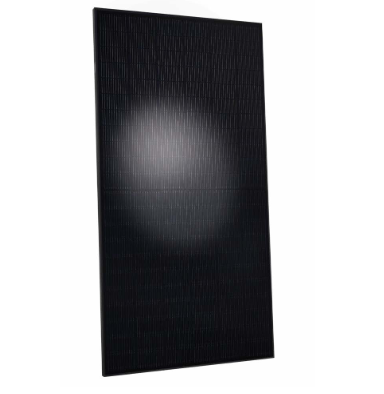
| Efficiency | Power (W) | Product warranty | Performance warranty | Heat resistance | Weight (kg) | Eco-friendly Aspect |
|---|---|---|---|---|---|---|
| 20.6% | 385 | 12 years | 86% after 25 years | -0.25% per °C | 19.1 | N/A |
Diving past its technically dense name, the Q Cells’ stellar panel is a formidable contender when it comes to handling the heat. Its superior heat resistance ensures a mere 0.25% efficiency drop for every degree the temperature sails above 25°C.
This feature positions the Q.Peak DUO BLK ML-G9 significantly ahead of the curve, considering a whopping 78% of the panels scrutinized exhibit a decline of 0.34% or more, with the industry norm teetering around 0.38% efficiency loss.
Pros and Cons of Q Cells Q.Peak DUO BLK ML-G9
| Pros | Cons |
|---|---|
| Outstanding heat resistance, keeping performance high even during hot spells | The 12-year product warranty falls short when compared to some competitors |
| One of the lighter panels in the market, easing installation and reducing load | Lack of eco-friendly credentials might not appeal to the environmentally inclined consumer |
| Compact size makes it a flexible choice for varied installation spaces |
The Q Cells Q.Peak DUO BLK ML-G9 stands as a testament to engineering excellence in crafting heat resilient solar panels. Its distinctive heat resistance feature, combined with a compact and lightweight design, underscores its suitability for places experiencing warmer climates. However, the relatively short product warranty and absence of eco-friendly certifications could be points of consideration for potential buyers.
The enticingly dubbed Tiger Neo panel by Jinko Solar is a behemoth in both size and capability. However, it’s this very magnitude that empowers the Tiger Neo to unfurl a peak power output of 575W, which towers nearly two-thirds above the industry’s average benchmark. For large families with substantial energy demands, the Tiger Neo emerges as an ideal contender.
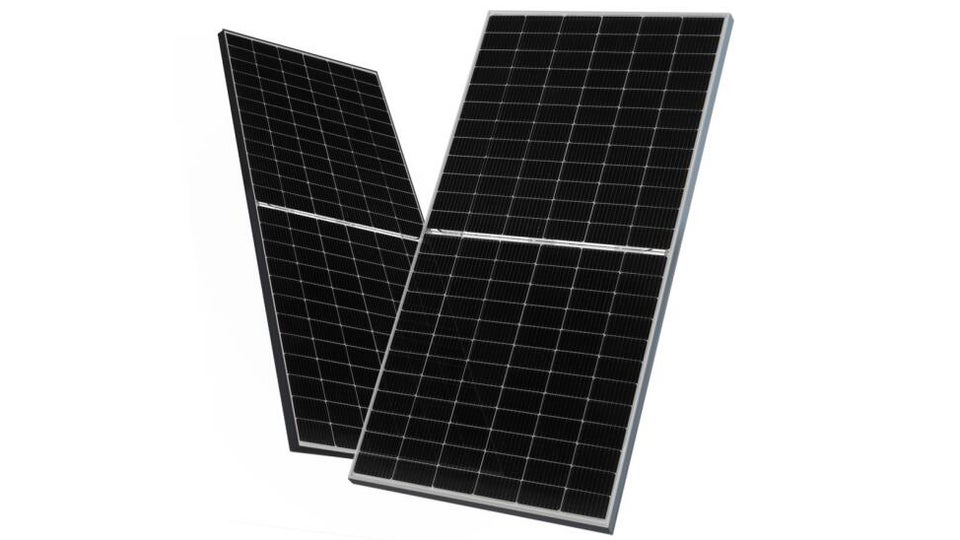
| Efficiency | Power (W) | Product warranty | Performance warranty | Heat resistance | Weight (kg) | Eco-friendly Aspect |
|---|---|---|---|---|---|---|
| 22.26% | 575 | 12 years | 87.4% retention after 30 years | -0.27% per °C | 28 | N/A |
Despite its grand size, you won’t need a sprawling rooftop to host these panels. Thanks to their stellar per-panel power rating coupled with an impressive efficiency metric, you can fulfill your energy needs with fewer panels, optimizing roof space. The only fly in the ointment seems to be the modest 12-year product warranty.
Pros and Cons of Jinko Solar Tiger Neo 72HL4
| Pros | Cons |
|---|---|
| Tremendous peak power production, catering to high energy requirements. | The 12-year product warranty falls behind when juxtaposed with some market competitors offering longer warranty spans. |
| High efficiency rating ensures optimized energy generation per panel, allowing for fewer panels and better space utilization. | Its substantial size and weight may pose installation challenges and necessitate sturdy mounting infrastructure. |
| Ideal for larger households with significant energy demands. |
The Jinko Solar Tiger Neo 72HL4, with its formidable power output and efficiency, stands as a robust solution for large families looking to harness solar energy effectively. However, potential buyers may want to weigh the warranty duration and installation requisites before making a decision.
In the realm of eco-responsibility, Panasonic stands tall with its EverVolt EVPV410H solar panel. The company’s substantial commitment to achieving net-zero emissions by 2030 reflects a larger vision of sustainability, setting it apart in a crowded market. The EverVolt EVPV410H is not just a product, but a statement of Panasonic’s green ethos.

| Efficiency | Power (W) | Product warranty | Performance warranty | Heat resistance | Weight (kg) | Eco-friendly credentials |
|---|---|---|---|---|---|---|
| 22.2% | 410 | 25 years | 92% after 25 years | -0.26% per °C | 20.5 | Net-zero by 2030 |
Embracing solar power is an eco-conscious choice, cutting down on pollution and actively countering climate change. Panasonic, however, elevates this green initiative further. The brand has meticulously mapped out a roadmap to achieve net-zero emissions by the year 2030, diversifying into hydrogen investment, transforming its factories and showrooms into net-zero establishments, and fostering eco-friendly business practices.
While numerous solar manufacturers are making strides, like engaging in panel recycling or collaborating with environmentally-driven entities like Better Earth and the United Nations, a definitive environmental commitment is often lacking. Panasonic breaks this mold, holding a commendable eco-track record, with its EverVolt panel standing as a testament to this ethos.
Pros and Cons of Panasonic EverVolt EVPV410H
| Pros | Cons |
|---|---|
| Remarkable environmental commitment showcased by Panasonic | Power rating is average, which may not cater to high energy demands. |
| Solid efficiency rating ensuring optimized solar energy conversion | |
| Impressive performance warranty, providing a long-term reliability. |
With the EverVolt EVPV410H, Panasonic is not just offering a proficient solar panel but a clear environmental pledge. It’s an apt choice for the eco-conscious consumer seeking a reliable and sustainable energy solution.
Aesthetics meet efficiency in the sublime design of the Belinus M8 HJT GlasGlas solar panel. With its sleek black demeanor, this panel is a testament to how seamlessly solar technology can blend with modern architecture while endorsing an eco-conscious lifestyle.
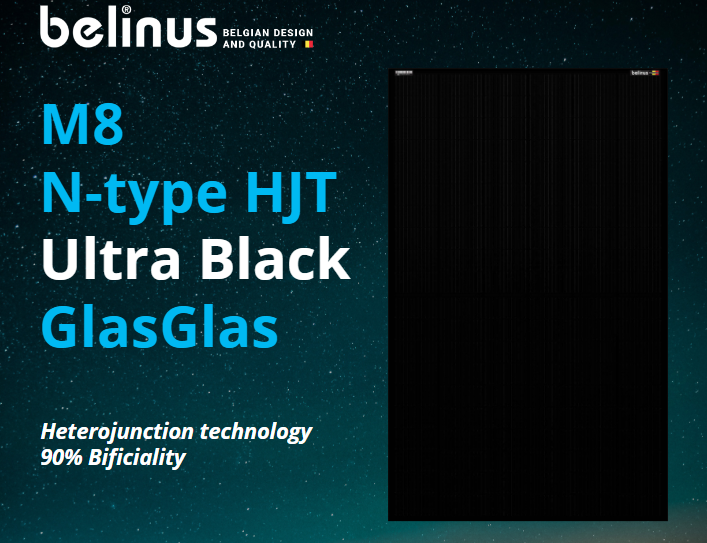
| Efficiency | Power (W) | Product warranty | Performance warranty | Heat resistance | Weight (kg) | Eco-friendly credentials |
|---|---|---|---|---|---|---|
| 22% | 400 | 35 years | 86% after 35 years | -0.255% PER °C | 23.5 | Solar panels on its factories & >60% green energy |
Belgium-based Belinus has crafted what can be termed as a quintessential monocrystalline panel in the M8 HJT GlasGlas. Its dark and refined appearance adds a modern, sophisticated touch to any dwelling, creating an aesthetic so understated that many might overlook the panels altogether.
The dark allure of the M8 HJT GlasGlas speaks volumes about the evolution of solar panels, from being stigmatized as unsightly additions to being embraced as elegant, modern fixtures. According to a recent National Home Energy Survey, a promising 69% of individuals expressed willingness to purchase homes equipped with solar panels, showcasing a positive shift in perception. Moreover, Belinus is making strides beyond aesthetics, expanding its footprint with factories sprouting across Europe, thus exemplifying that solar manufacturing is a flourishing global endeavor.
Pros and Cons of Belinus M8 HJT GlasGlas
| Pros | Cons |
|---|---|
| Exceptional aesthetic appeal | Slightly on the heavier side |
| Impressive product warranty duration | |
| Remarkable performance warranty |
In a market where functionality often overshadows form, the Belinus M8 HJT GlasGlas makes a bold statement. Its combination of elegant design, a remarkable product warranty, and compelling performance warranty positions it as more than just a solar panel—it’s a reflection of modern architectural aesthetics fused with cutting-edge solar technology. For homeowners looking to enhance their dwelling’s appearance while making a substantial eco-friendly shift, investing in these stylish panels will be a decision that marries the best of both worlds.
Engineered to seamlessly integrate with your roof, Sharp’s SunSnap ND-F2Q235 solar panels continue to be among the market’s best-selling models over the years. Through continuous refinement, they have maintained their status as a premium choice for numerous homeowners.
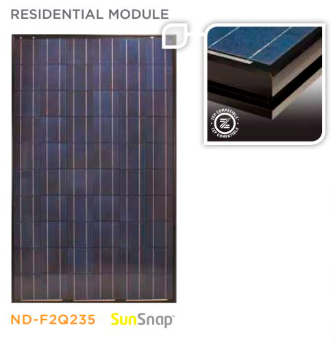
| Efficiency | Power (W) | Product warranty | Performance warranty | Heat resistance | Weight (kg) | Eco-friendly aspect |
|---|---|---|---|---|---|---|
| 14.4% | 325 | 25 years | 25 years | -0.25% PER °C | 21.2 | N/A |
Crafted to meld subtly with your rooftop, Sharp’s SunSnap ND-F2Q235 solar panels have held a strong position among the best-selling models in the market over several years. Through ongoing refinements, they sustain their appeal as a high-end choice for a myriad of homeowners.
Established in 1912, Sharp has been a reliable name in home electronics. They ventured into the solar panel domain over five decades ago, at one point achieving the distinction of creating the world’s most efficient solar panel—a title now held by SunPower.
The SunSnap panels are prized for their compact, elegant design, eliminating the necessity for mounting rails and offering a nearly seamless integration with your roof tiles. This aesthetic appeal makes them a favored choice for heritage-listed properties or those situated in conservation zones. Each panel comprises 60 polycrystalline cells, encased in laminated and tempered glass, exhibiting resilience in extreme temperature conditions.
Pros and Cons of Sharp SunSnap ND-F2Q235
| Pros | Cons |
|---|---|
| Advanced aesthetics | Competitive Efficiency |
| Rail-less Mounting | |
| Continual Refinements |
In conclusion, Sharp’s SunSnap ND-F2Q235 solar panels offer a sleek, aesthetic appeal without compromising on durability and performance. They represent a fine balance between modern solar technology and unobtrusive design, making them a solid choice for homeowners, especially those in aesthetically sensitive areas.
Embodying aesthetic elegance and top-notch German engineering, the Solarwatt Panel Vision 3.0 stands out in the crowded solar panel market. Known for its innovative glass-glass technology, which encapsulates solar cells between two durable glass panels, it doesn’t just offer enhanced resilience against harsh weather but also promises extended longevity.

| Efficiency | Power (W) | Product warranty | Performance warranty | Heat resistance | Weight (kg) | Eco-friendly aspect |
|---|---|---|---|---|---|---|
| 19.6% | 380 | 30 years | 30 years | -0,34 %/K | 25 | Environmentally friendly manufacturing process, recyclable panels |
With a 30-year dual warranty covering both product and performance, Solarwatt exudes confidence in the durability and efficiency of its Vision 3.0 panels. This warranty is among the most comprehensive in the industry, providing homeowners a sense of security for their solar investment over decades.
Furthermore, the Vision 3.0 panels offer a unique reduced yield reimbursement feature. Should the annual yield fall short of the forecast due to cloudy weather, faulty modules or inverters, customers are reimbursed for the income loss, a testament to Solarwatt’s customer-centric approach.
Pros and Cons of Solarwatt Panel Vision 3.0
| Pros | Cons |
|---|---|
| Innovative glass-glass technology for superior durability | Performance degradation not specified |
| Attractive sleek black design | |
| Eco-friendly manufacturing and recyclable panels |
Solarwatt’s Vision 3.0 solar panels are not just a representation of superior German engineering but are a testament to the balance between aesthetic appeal and functional efficiency in solar technology. The brand’s emphasis on eco-friendly manufacturing and comprehensive warranties makes it an attractive choice for the environmentally conscious homeowner. As European-manufactured panels, they also offer a lower carbon footprint for installation, aligning well with the global shift towards more sustainable energy solutions.
Hiring a professional to tend to your solar panel cleaning and maintenance is always a prudent choice to ensure safety and avoid any damage to your system. Solar panels are a low-maintenance solution for green energy, making them a convenient choice for homeowners. However, a little attention now and then can help keep them operating at peak efficiency.
Cleaning Solar Panels: Since solar panels are positioned on rooftops, they tend to gather dirt and debris, which can hinder their performance by blocking sunlight. It’s advisable to clean your panels at least twice a year using a soft brush or sponge and a gentle stream of water. Before undertaking the cleaning, reach out to your supplier for any specific cleaning guidelines to prevent accidental damage. For a safer and more thorough cleaning, consider hiring a professional, especially since the combination of heights, water, and electrical equipment can pose risks.
Checking for Cracks: While cleaning, it’s a good time to inspect the mounting structures to ensure the panels are securely attached. Look over each panel for any cracks or damages that might allow water seepage.
Monitoring for Corrosion: The metal brackets used for mounting solar panels can corrode over time. Corrosion can pose a threat to your panels and even your roof. It’s wise to check for signs of corrosion during your bi-annual cleaning. Those living in coastal regions should inspect for corrosion more frequently due to the salty air which can accelerate corrosion.
Reviewing Output Performance: Upon installation, a controller or meter is typically set up to monitor the system’s performance. Regularly check this, particularly after cleaning, to ensure your panels are functioning optimally. If the performance seems low, contact your installer for a professional inspection, as this could indicate a need for repairs or replacements.
Professional Assistance: If you’re uncertain about the maintenance or the panels are out of reach, get in touch with your installer or a professional maintenance service. Many companies offer service contracts that alleviate the need to navigate rooftop maintenance, ensuring your panels remain in top condition without the risk of accidental damage.
Look for companies with a strong reputation for quality, long-term warranties, high-efficiency ratings, and positive customer reviews. Additionally, consider their pricing, solar panel technologies, and the availability of installation and maintenance services.
Yes, solar panels can be a cost-effective investment for European homeowners. Government incentives and subsidies, coupled with decreasing solar technology costs, make solar installations a financially viable option. The return on investment varies by location and energy consumption, but in many cases, homeowners can expect to recoup their initial investment within a reasonable timeframe, followed by significant savings on electricity bills over the lifespan of the solar panels.
European solar panels have a positive environmental impact. They generate clean electricity from sunlight, reducing the reliance on fossil fuels and helping to combat climate change. By decreasing greenhouse gas emissions, air pollution, and water usage associated with conventional energy sources, solar panels contribute to a more sustainable and environmentally friendly energy landscape in Europe.
Stay a while and read more posts like this
Renewable Energy, Solar Energy, Solar Energy Basics, Solar Technology
“Unlock the Truth: Get the Facts on Solar Energy!” Introduction Solar energy is becoming increasingly popular as a renewable energy source, but there are...
Imagine a world where you’re able to cut your monthly energy expenditure substantially. A reality where your home isn’t reliant on finite,...
Future of Solar, Renewable Energy, Solar Energy, Solar Energy Basics
If you’ve been exploring options for a more sustainable energy source, you’ve likely come across terms like ‘solar panel’ and ‘solar...